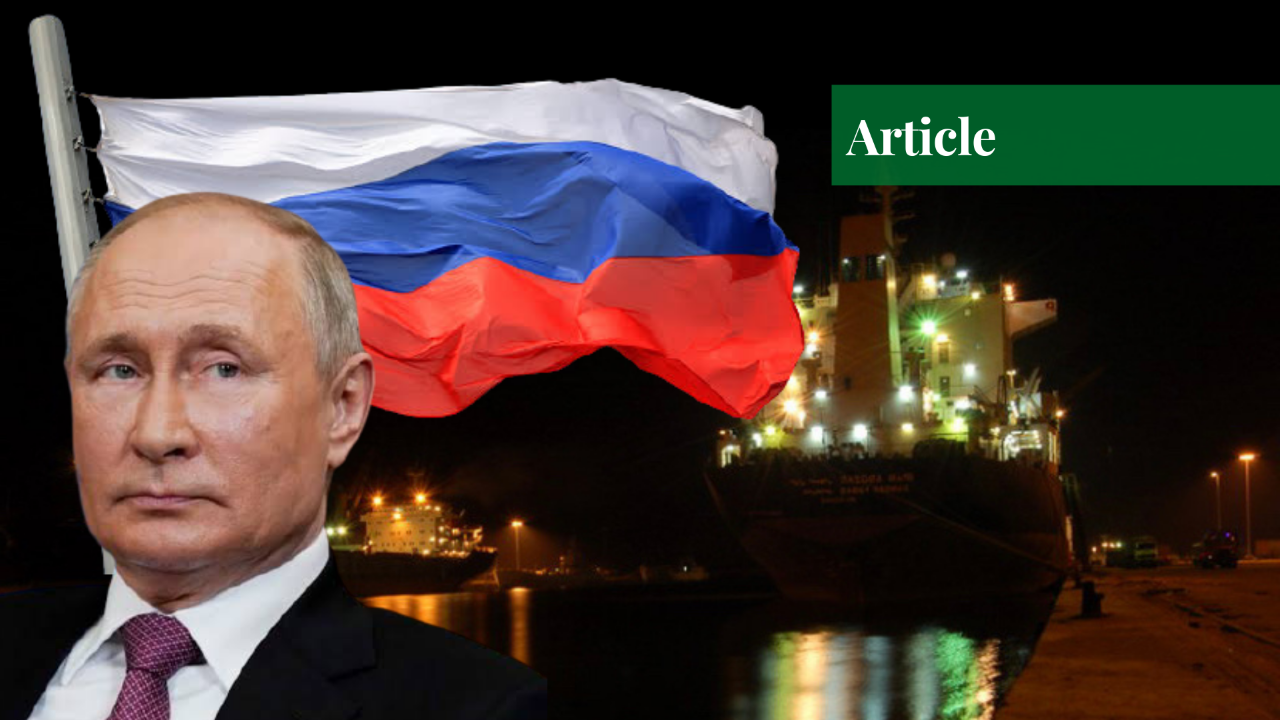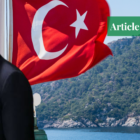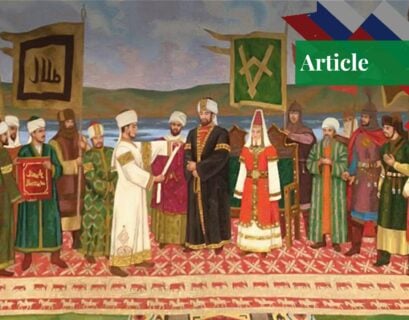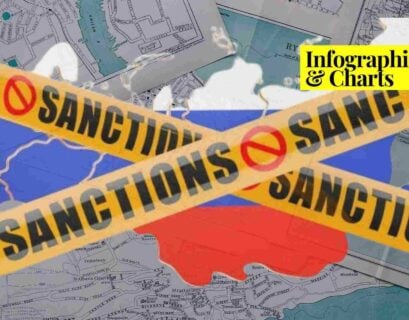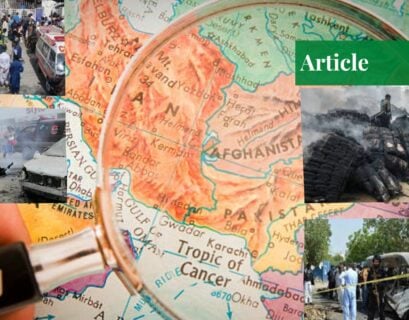Ms Ayesha Zafar is currently pursuing her Bachelor's in International Relations from National Defence University, Islamabad. She has authored multiple academic publications including research articles and book chapters. Her areas of interest include Middle Eastern politics, the geopolitics of Central Asia, and the Indo-Pacific region
The Treaty of Friendship
Relations between Russia and Syria developed back in 1946 with the signing of an agreement whereby Russia recognized Syrian independence after the French troops left. From here, bilateral relations started gaining strength with each passing year.
Digging a little back into history, during World War II, both states were on the Allied side against the Axis powers, and throughout the cold war era, the Soviets maintained strong relations with Syria because of the military support provided and the defense agreements both states signed with each other.
The Soviet Union used Syria as a regional agent to enhance its superpower status in the intense Cold War years. Statistics show that Soviet arms exports to Syria reached an average of $2.3 billion per year till 1985. Not just this, in Yom Kippur War-1973, when Syria along with Egypt was in the frontlines against Israel, the Soviet Union stepped in for Syrian support with 3750 tons of aid.
Moreover, both states signed a treaty of friendship in October 1980 that gave a further boost to their strong relations. Also, Russia, a permanent member of the UNSC, in 2011 and 2012 used its veto power to halt any sanctions or interventions in Syria, and in 2015, it itself intervened in the Syrian civil war upon the request of President Bashar-ul-Assad for military assistance in a letter.
Strategic Partners
Today, both are each other’s strongest strategic partners in the Middle East and for Russia, Syria is at the heart of all its designed strategy in the region. Nevertheless, this relationship is not just to be looked at from the historical perspective, rather the hard geopolitics is at play as well since Russia’s increasing footholds in Syria would mean its grip in the wider Middle Eastern region.
Importantly, the decision to maintain Russia’s permanent military presence in Syria at the heart of the Middle East by signing an agreement of leasing Syrian Tartus port for the coming 49 years would mean restoring Russia’s status as a world player, since the presence would allow Russia to alter the regional balance of power in the foreseeable future.
The agreement was signed back in 2017 when Syria agreed to lease the Syrian Tartus port to Russia for the coming 49 years. The decision of leasing was announced by President Vladimir on 13th December 2017. This agreement will open new windows of opportunity for both states as Russia has planned to invest $500 million along with building grain hubs on the port.
Arms Exports
Russia is the world’s 2nd largest arms exporter, and since 2000, the Middle East region has accounted for 18% of Russian arms exports which is why Russia sees the region as an important market for its arms exports. Therefore, in Vladimir Putin’s major military reform in August 2008, the MENA region remained a core of attention.
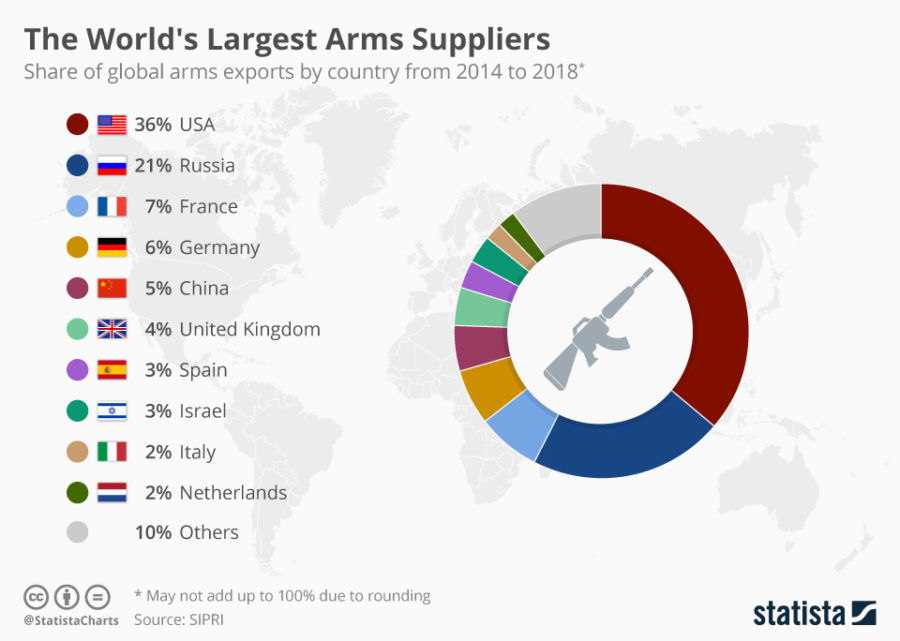
“The World’s Largest Arms Suppliers” by Statista is licensed under CC BY-ND 2.0.
Moreover, looking into the statistics from 2000 to 2016, the MENA region got the 5th largest arms exports from Russia. In 2016 alone $21.4 billion worth of arms were sold to the Middle Eastern region by Russia. Particularly in Syria, Russia’s arms exports reached almost $4.7 billion from 2007-2010. Thus, the Middle Eastern market is the largest export target for Russia.
Apart from this, the construction on Tartus port would be crucial for trade with Syria as Borisov stated “We hope it will have positive go-ahead in mutual trade. The motorways, railways and airport will be in future connecting the Tartus to the Gulf, through Iraq. This would allow goods to be shipped to Gulf”.
Thus, the agreement between Russia and Syria will be economically prosperous for the two and presently a number of Russian firms are heading different infrastructure projects in the port of Tartus. Nevertheless, analyzing it from a hardcore lens, the leasing of Syrian Tartus port unfolds numerous other objectives.
The Russian presence on Tartus port is not new, as it has had its presence there in the Soviet era (1970, Hafez-ul-Assad time), but at that time the port was used only for food supplies and refueling. However, with 2015 Russia’s involvement in Syria, Tartus port now acts as a strategic logistical hub. Therefore, Russia’s interest in leasing port for the next 49 years is to protect its only Mediterranean naval base-Black Sea Fleet that is located in the port of Syria.
The Russian Presence in the Syrian Port of Tartus
Along with this, Russia aims to increase its military, naval, and air deployment on the Tartus port from where it can easily eye the US activities. Moreover, Vladimir Putin stated on December 28 that Tartus would be operating “on a permanent basis”. Thus all these statements are a clear depiction of Russia’s interest to have a long term military presence in the Middle Eastern region using Syria as a cornerstone. The Russian presence on the Tartus port.
Important to note here is that the Russian naval facilities on the Tartus port are very close to the Russian Khmeimim airbase in Latakia with an estimated travel distance of 45 miles. So by having a presence in the Tartus port, Russia would be able to ensure better security of its airbase Khmeimim.
According to Russia’s RIA news agency, the deal will allow Russia to have its 11 warships at the port, including nuclear vessel Pyotr Veliky. Moreover, Russian personnel’s were granted immunity, and ships were allowed to use internal waters, free of charge. Notably, the Russian missile ship, Veliky Ustyug was found patrolling from Tartus port towards the East of the Mediterranean on September 26, 2019.
In this regard, an important statement was given by Capitan Sergei who stated that “the port is having around two missile corvettes, three patrol boats along with three supply vessels”. Henceforth, all of this is a clear depiction of Moscow’s growing military foothold in the Middle Eastern region while using Syria as a strategic bedrock.
To conclude, Russia under Vladimir Putin is long aiming to restore the lost legacy and is trying to resurge, therefore its strong military presence in Syria will be a gateway to the Middle Eastern region and a game-changer for its future trajectory.
If you want to submit your articles and/or research papers, please check the Submissions page.
The views and opinions expressed in this article/paper are the author’s own and do not necessarily reflect the editorial position of Paradigm Shift.
